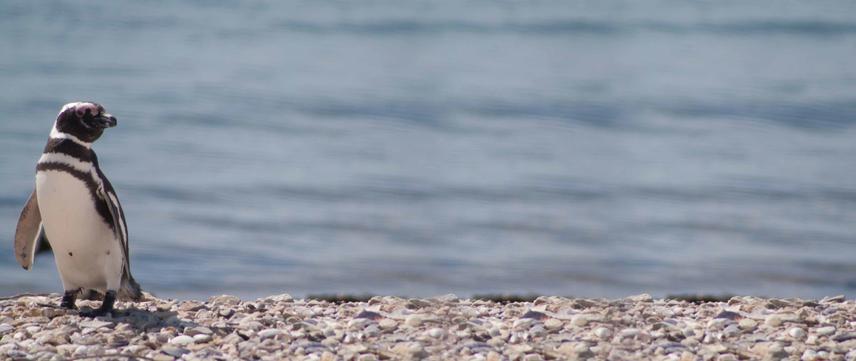Social media video featuring the project.
MUESTRA FOTOGRÁFICA Y CHARLA sobre AVES MARINAS Y PESQUERÍA DE ARRASTRE de Diego Zevallos
28 Nov 2011 Bahía Bustamante, Argentina, Central and Latin America Birds | Marine
The general goal of this project is to assess the potential overlap in resource use between breeding Magellanic Penguins and trawl fisheries operating in Golfo San Jorge.

The Magellanic Penguin is an iconic species internationally recognized as ‘Near Threatened’ which breeds in Argentina between 41 and 54º south. Due to its role as top predator, it is a significant component of marine ecosystems. Magellanic Penguins are considered excellent candidates as ecological indicators, which may provide early warnings in case of unsustainable resource harvesting or changes in environmental conditions.
This species is also important for local and regional economies, being one of the main ecotourism attractions. Main threats faced by this species include commercial fisheries, pollution, unregulated tourism, and the potential consequences of climate change. Over 25% of its total breeding population in Patagonia, estimated at 950000 pairs, nests at Golfo San Jorge. This is one of the priority areas for breeding seabirds in Argentina and an important area for commercial fisheries. Foraging Magellanic Penguins commonly overlap with trawl fishing operations resulting in incidental mortality, and although competition for common prey is suspected, information is still lacking to evaluate the potential effects. Recognition of the environmental value of this area has resulted in its recent designation as a marine protected area (Patagonia Austral Marine Park), and thus information is urgently needed for the development of a management plan.
Social media video featuring the project.
MUESTRA FOTOGRÁFICA Y CHARLA sobre AVES MARINAS Y PESQUERÍA DE ARRASTRE de Diego Zevallos